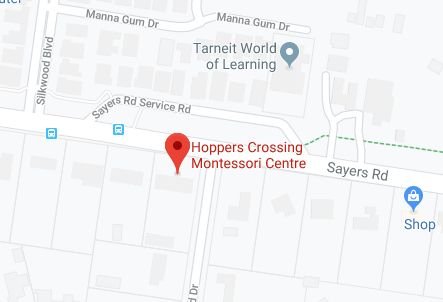Curriculum
The Preschool to Kindergarten year old child is undergoing a process of self-construction. The application of the Montessori philosophy and the specifically designed Montessori equipment aids the child’s ability to absorb knowledge and continue this path of self-construction.
There are four main areas in the pre-school program: Practical Life, Sensorial, Language and Mathematics. Considerable emphasis is also placed on Creative Arts, Music, Science, Geography and Cultural Studies. Acquisition of one’s own first culture is the child’s central developmental drive in the first plane of development.
The pre-primary environment serves this drive abundantly, bringing the world to the child. Globes, maps, songs, land forms, collections of pictures of life in different cultures, and much more, is offered, with the aim of helping the child to grow as an individual appreciating the larger context of his or her world.
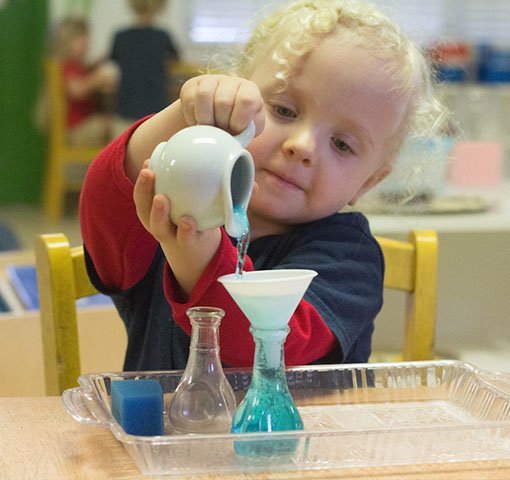
Practical Life activities are the activities of everyday life and they are involved in all aspects of life.
The child observes these activities in the environment and gains knowledge through the real experience of how to accomplish life skills in a purposeful way. Practical life activities help give the child a sense of being and belonging, established through participation in daily life with us.
Generally the activities of practical life revolve around four areas:
- Caring for the Self
- Caring for the Environment
- Grace & Courtesy and
- Movement of Objects
Practical Life activities have a unique purpose which, when carried out properly, are very calming.
Some of the achievements child gains from this are:
- demonstrating a high level of concentration
- developing a sense of order (putting all materials back where they belong)
- taking pride in a job well done
- increasing independence through care of self and the environment
- developing respect for his community (using materials appropriately and cleaning up afterwards)
- improving fine motor coordination
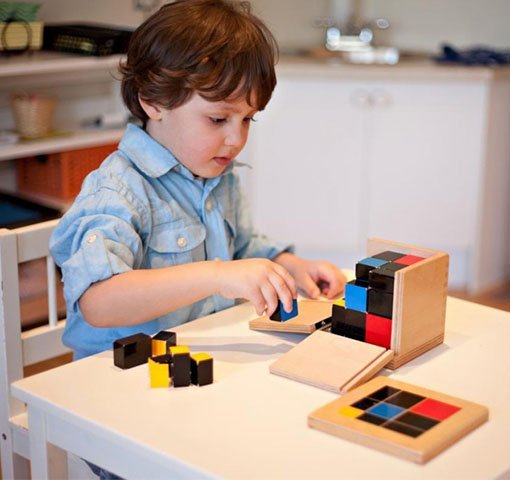
Sensorial: From early age children are developing a sense of order and they actively seek to sort, arrange and classify their many experiences. The sensorial component provides a key to the world, a means for a growth in perception, and understanding that forms the basis for abstraction in thought. The sensorial materials give the child experience initially in perceiving distinctions between similar and different things. Later the child learns to grade a set of similar objects that differ in a regular and measurable way from most to least.
Sensorial Exercises were designed by Montessori to cover every quality that can be perceived by the senses such as size, shape, composition, texture, loudness or softness, matching, weight, temperature, etc.
Because the Exercises cover such a wide range of senses, Montessori categorized the Exercises into eight different groups:
- Visual
- Tactile
- Baric
- Thermic
- Auditory
- Olfactory
- Gustatory, and
- Stereognostic

Language: Preparation for reading and writing begins in the Montessori preschool environment, where the practical life area prepares the child to read and write by strengthening the fine muscles of the hand as well as developing the left-to-right movement necessary for writing and reading.
Preparation for writing begins with the practical life exercises and sensorial training. Muscular movement and fine motor skills are developed along with the ability of the child to distinguish the sounds which make up language. With this spoken language background the directress begins to present the alphabet symbols to the child.
Not only can children hear and see sounds but they can feel them by tracing the sandpaper letters. When a number of letters have been learned the movable alphabet is introduced. These cardboard or wooden letters enable the child to reproduce his or her own words, then phrases, sentences and finally stories.
Creativity is encouraged and the child grows in appreciation of the mystery and power of language. Other materials follow which present the intricacies of non-phonetic spelling and grammar. Because children know what they have written, they soon discover they can read back their stories. Reading books both to themselves and others soon follow.
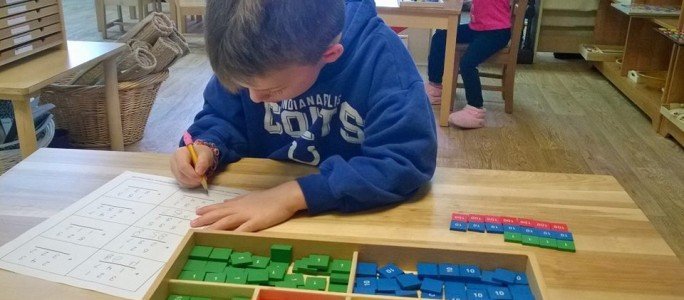
Mathematics: Mathematics is a way of looking at the world, a language for understanding and expressing measurable relationships inherent in our experience. A child is led to abstract ideas and relationships by dealing with the concrete.
The child’s mind has already been awakened to mathematical ideas through the sensorial experiences. The child has seen the distinctions of distance, dimension, graduation, identity, similarity and sequence and will now be introduced to the functions and operations of numbers.
Geometry, algebra and arithmetic are connected in the Montessori method as they are in life. For instance the golden bead material highlights the numerical, geometrical and dimensional relationships within the decimal system. Through concrete material the child learns to add, subtract, multiply and divide and gradually comes to understand many abstract mathematical concepts with ease and joy.
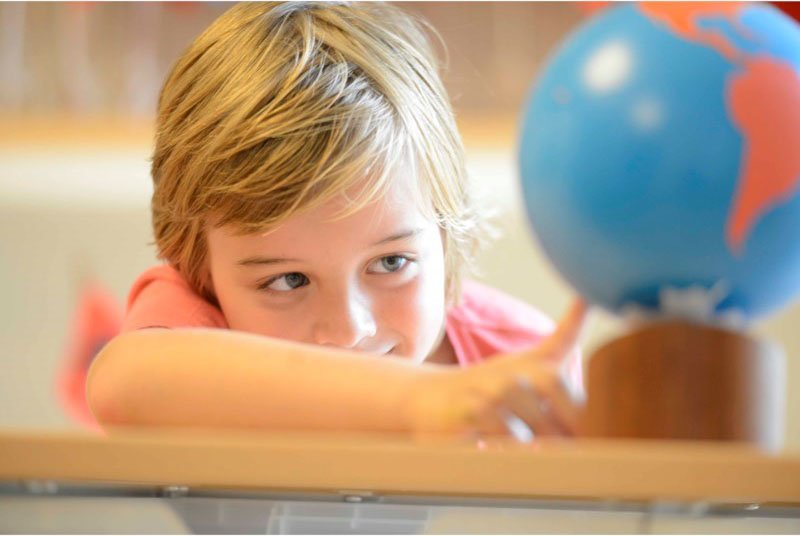
Cultural Arts: Children are introduced to a range of cultural subjects through especially prepared extensions to the sensorial and language materials.
The use of storytelling and visual material such as maps, flags, timelines and materials depicting the animal world and the natural environment, extends the children’s experience into cultural areas including geography, history, art and science.
Through these studies, children learn to respect and appreciate their culture, country and natural environment, and those of others, instilling qualities such as empathy and tolerance.
